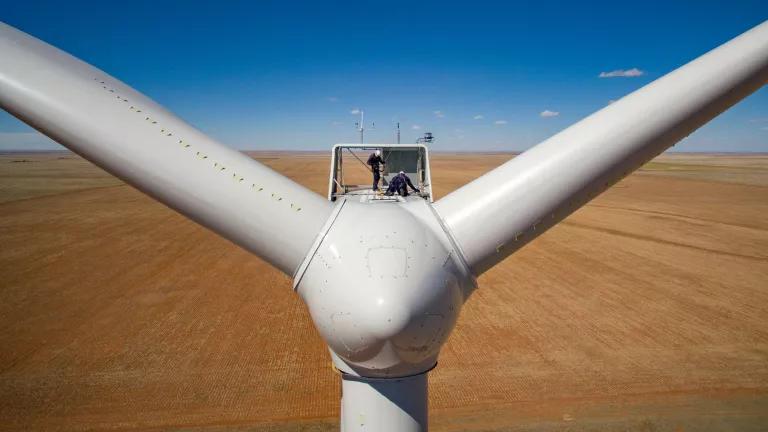Electrify to Fight Crazy Fuel Prices and Climate Change
New Yorkers should electrify their homes and cars this winter to fight crazy fuel prices, climate change, and air pollution.
The Climate Action Council just approved the final Scoping Plan, implementing New York’s Climate Leadership and Community Protection Act. As part of the 400+ page plan, covering every aspect of New York’s economy, the recommendations for the transportation and buildings sector are resoundingly in support of nearly ubiquitous electrification being the least cost and most effective path forward, yielding not only enormous reductions in climate and air pollution, but also price stability and reduced exposure to global energy markets’ volatility and risk.
This winter, in particular, is a great time for New Yorkers to electrify their buildings and cars. Fossil fuel prices have skyrocketed and are expected to be much higher this winter than last winter. The exorbitance of these prices is compounded by the fact that this winter is likely to be slightly colder than last winter, which would result in a higher demand for heating fuels. By switching to heat pumps, induction cooktops, electric vehicles, and so on, New Yorkers would no longer be so vulnerable to the high volatility of fossil fuel prices, and they would also be able to reap the multiple climate and air quality benefits associated with electrification.
From Volatile Prices to Energy Independence
Fossil fuel prices are highly sensitive to global events because they are set by global markets. The Russian invasion of Ukraine is not only a humanitarian crisis in Europe, but also a major disruption in natural gas supply all around the world. According to the U.S. Energy Information Administration’s “Winter Fuels Outlook,” the average household natural gas retail price in the Northeast is expected to increase a staggering 17% from last winter to this winter. Similarly, gas prices in New York State were 13% higher this September than last September, according to NYSERDA. In comparison, the estimated increase in average household electricity retail prices in the Northeast this winter is a relatively mild 8%.
Therefore, electric prices are more stable, and compared to price increases in higher cost fossil fuels like propane, gasoline, and fuel oil, electrification can save money. For example, if a New Yorker replaces their gas car with an electric one, they can save over 40% in fuel costs alone, according to a Consumer Reports study. That is because the average price of residential electricity throughout the U.S. has been approximately a dollar-a-gallon for over 20 years, as shown in the figure below.

Of course, electrification comes with upfront costs, but the Inflation Reduction Act and other incentive programs have provided subsidies and tax credits for electric appliances, energy efficiency and electric cars. Electrification also creates new jobs and keeps them in the community as demand for retrofit, installation, and infrastructure services grows. Ultimately, electrification is an important step towards energy independence—and indeed independence from entities that are inimical to our values and harming our allies.
Climate Benefits
In order to meet our climate goals, we need to electrify more than 90% of our buildings and cars because electric technologies have significantly lower greenhouse gas (GHG) emissions than their fossil-fuel equivalents, especially when running on renewable energy. For example, the GHG emissions of residential heat pumps are 53-67% lower than gas furnaces’ based on emission forecasts for 2022-2036 in six regions across the US, and drop to zero once the grid is zero emissions (which will be in 2040 in New York State), and the lifecycle GHG emissions of average medium-size battery-electric vehicles (BEVs) registered in 2021 are 60%-68% lower than comparable gas cars.
Air Quality Benefits
Electrification also improves air quality and, as a result, health. Gas stoves emit air pollutants such as nitrogen dioxides, carbon monoxide, and formaldehyde, and in California, even gas stoves when they’re turned off emit as much benzene as 60,000 light-duty gas cars. According to a meta-analysis, children with gas stoves at home are 42% more likely to have current asthma, 24% more likely to have lifetime asthma, 32% more likely overall to have current and lifetime asthma. These air pollutant emissions and health risks could be minimized when gas stoves are replaced by induction cooktops.
Similarly, transitioning to a zero-emission transportation sector would reduce nitrogen oxides (NOx) by 92%, volatile organic compounds (VOC) by 78%, fine particle pollution (PM2.5) by 61%, and sulfur dioxide (SO2) by 93%, according to the American Lung Association. They also estimate that from 2020 to 2050, the cumulative health benefits of a zero-emission transportation sector in New York would include 6,200 premature deaths avoided, 159,000 asthma attacks avoided, and 825,000 lost workdays avoided.
Conclusion
With fossil fuel prices running amok, climate change impacts increasingly catastrophic, and air pollution ever so severe in many parts of the state, New Yorkers would benefit immensely from electrification. Of course, energy conservation remains indispensable because energy saved is the cheapest source of energy. But electrification is one of the major steps New Yorkers can take to enhance their wellbeing this winter and beyond.




